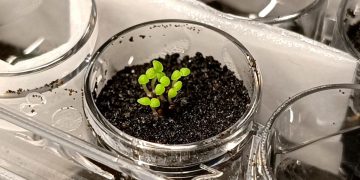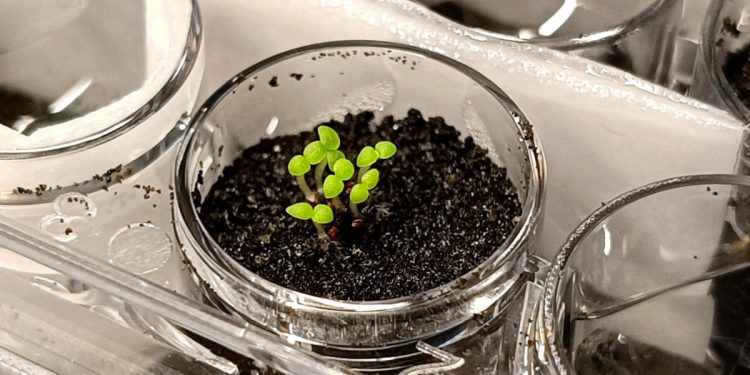#MoonAgriculture #LunarSoilFertility #Space Exploration #SustainableFarming #MicrobialInnovation #LunarGreenhouses #In-situResourceUtilization #SpaceFarming #FutureofAgriculture #LunarBases
In the quest for sustainable space exploration, scientists are exploring the feasibility of moon agriculture as a crucial component of establishing long-term human bases on the lunar surface. While the idea of planting crops on the moon might seem far-fetched, recent research indicates that it may be closer to reality than we think.
A team of researchers from the China Agricultural University in Beijing has discovered a groundbreaking method to make lunar soil fertile by introducing specific bacteria. In a study published in the journal Communications Biology, lead author Yitong Xia revealed that they successfully transformed inhospitable lunar regolith into a bio-friendly substrate for plant cultivation.
The researchers performed experiments using a relative of tobacco, Nicotiana benthamiana, in a laboratory in China. The simulated moon soil, created with volcanic material from the Changbai mountains of China’s Jilin Province, was treated with three species of bacteria: Bacillus mucilaginosus, Bacillus megaterium, and Pseudomonas fluorescens. The results were impressive, with plants showing longer stems and roots, as well as heavier and wider clusters of leaves compared to soil without microbial treatment.
The key to this success lies in the bacteria-induced soil acidity, creating a low pH environment that dissolves insoluble phosphate-containing minerals. This process releases phosphorus, a vital plant nutrient, thereby enhancing its availability for the plants. Xia emphasized the potential of these findings for future lunar greenhouses, providing a sustainable solution for plant cultivation on the moon.
Previous studies in the United States involved growing Arabidopsis thaliana, a flowering weed, in actual moon soil collected during NASA missions. While the plants did grow, they didn’t thrive as robustly as those in volcanic ash from Earth. This highlighted the need for additional measures to improve lunar soil fertility.
The importance of this research extends beyond lunar agriculture. As Xia pointed out, establishing manned lunar bases necessitates solutions for providing food, oxygen, and water for the crew members. Traditional methods, such as transporting these essentials from Earth, are economically unsustainable. A greenhouse for plant cultivation on the moon, utilizing microbial improvement of lunar soil, could significantly reduce the need for Earth-moon transportation.
Xia proposed that a plant cultivation system on the moon could play a vital role in meeting long-term food and oxygen requirements for human crews. Plants, through photosynthesis, produce oxygen as a byproduct, contributing to the sustainability of lunar habitats.
The innovative use of microbes to enhance lunar soil fertility represents a leap forward in the potential for moon agriculture. This in-situ resource utilization could pave the way for sustainable plant cultivation on the moon, reducing the reliance on Earth-bound resources and making lunar bases more self-sufficient.


































